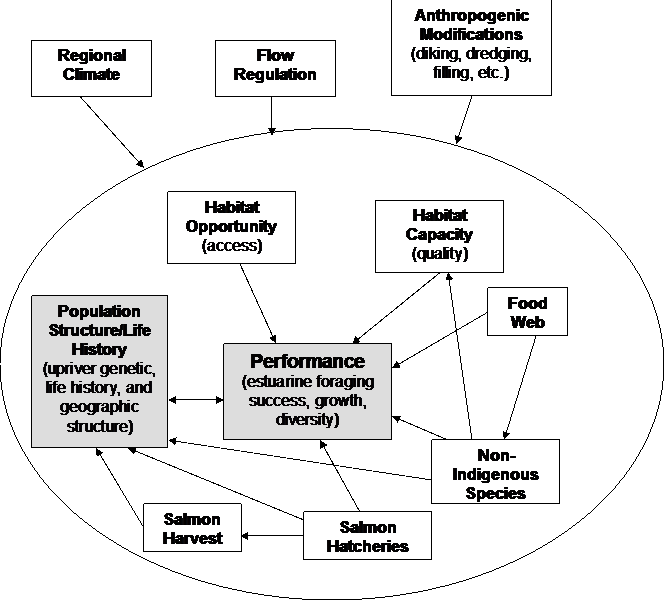Refuge provides protection from predation or energy demanding aspects of the ecosystem. Refuge can reduce losses from predation, energy loss due to swimming (i.e., against currents), and other physiological stresses due to exposure.
The figure at bottom left shows the use of large woody debris and channel habitat by juvenile salmon in the estuary (Simenstad 2001).
The figure at bottom right shows that salmon performance within the estuary is directly linked to population structure upriver, habitat opportunity, and habitat capacity. Hatchery releases, salmon harvest, and watershed modifications alter population structure and also may affect patterns of salmon rearing and migration in the estuary (Bottom et al. 2001).
Structures that affect refuge:
Scrub-Shrub Forest
Emergent Marsh
Submerged Aquatic Vegetation
Ecosystem functions that are affected by refuge:
Salmonid Production
Other Fish Production
Avifauna Production
Wildlife Production
Aesthetics/Recreation
Biodiversity Maintenance



